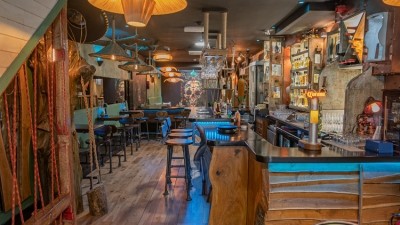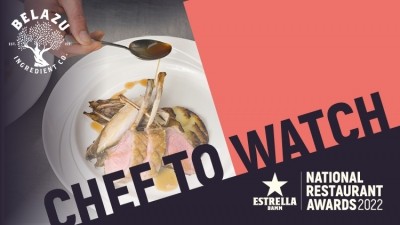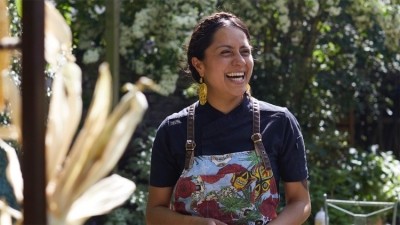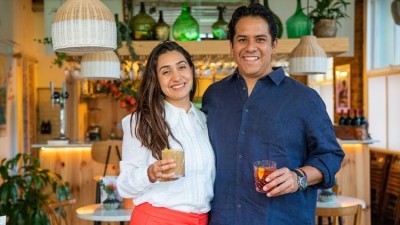Taco the town: Adriana Cavita on her debut restaurant
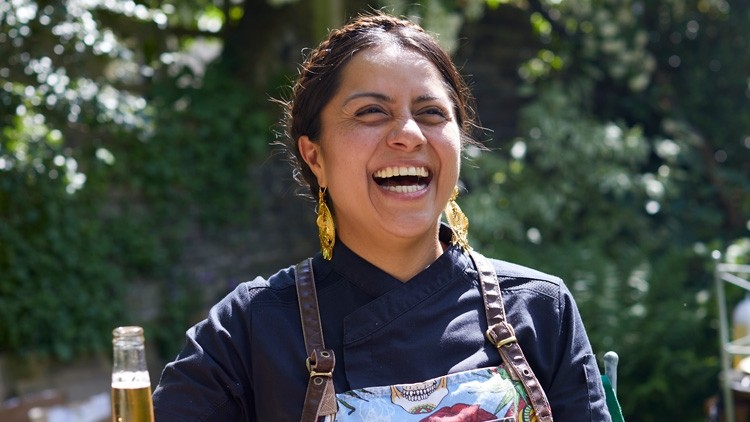
Adriana Cavita’s first real memory of working in a kitchen is with her grandma, who owned a street food business in Azcapotzalco, Mexico City. It was there that, as a child, Cavita saw how to mill nixtamal (soaked corn solution) and cook staple dishes including quesadillas, huaraches, tacos and tamales.
Cavita credits her grandma with inspiring her to pursue a career in hospitality. At just 17, she got her first restaurant job working as an apprentice at Nicos in Mexico City (currently ranked 31 on Latin America's 50 Best Restaurants list), before scoring her first full-time paid job when she was 19 at Pujol in Mexico City, a stalwart of The World's 50 Best Restaurants list. Later, she went on to work as chef de partie at Ferran Adria's three-Michelin starred El Bulli in Spain, which topped The World’s 50 Best Restaurant list five times before its closure in 2011.
Her experience in the kitchen is notable, but Cavita has also spent much of her early career immersing herself in the intricacies of Mexican cooking. She studied gastronomy at the Universidad del Claustro de Sor Juana; and has travelled the breadth of her homeland, learning the food traditions different states, cities and towns. It is this knowledge that Cavita now intends to bring to the fore at her eponymous debut restaurant, which is set to launch on Wigmore Street in London's Marylebone later this month.
Why have you chosen to open in London?
I moved to the UK six years ago to work as head chef at Peyotito in both London and Ibiza, but my dream was always to open my own restaurant. I love London and have made my home here. Marylebone is a good central location for us. My business partners were looking for something in that area, and they gave me the confidence to open there.
Tell us about Cavita
It’s a very personal restaurant. I don’t want to call it traditional. All that I cook is related to tradition in terms of the recipes and dishes, but I want it to be my own interpretation using UK produce. I’ve had two very distinct periods of training in my life. There’s been my experiences working in kitchens, and my travels across Mexico. The latter is where my understanding of the real Mexican cuisine comes from; I really grasped the roots of ancient techniques around cooking with the charcoal and fire, which still endure today. Every area of Mexico is so diverse. You can go from Oaxaca to Yucatan and experience completely different foods and flavours. There’s always something to learn, and that’s what I want to show with my restaurant.
What’s on the menu?
For me, Mexican cooking is all about the terroir, so I always try to cook with fresh, local ingredients and that’s a big part of the what I’m doing at Cavita. It’s a sharing menu, which is how I grew up – having a lot of food in the middle of the table. I want it to be generous and fun. The menu opens with a raw selection that includes Carlingford rock oysters with Clamato oil and jalapeño vinaigrette; and yellow tail aguachile rojo with watermelon, mezcal and ‘grasshopper’ seasoning. There are also small plates that include Mexican street food staples like tacos and tetelas, and larger plates, which will be based around a selection of moles. These will include sea bream cooked inside banana leaves with axiote marinade roasted peppers and black beans; and chargrilled octopus with guajillo and pasilla adobo, nopales and spring onion.
How often will the menu change?
It’ll change three or four times per year, with the seasons. Some dishes will be on there permanently, though, like the tuna tostada and the Baja fish taco. A lot of the menu development will be focused on the street food section and larger dishes. There’s a lot of space to play with there.
With Pujol and El Bulli, you’ve worked at two of the best restaurants in the world. How have those experiences influenced your plans for Cavita?
I’ve worked at Pujol twice in my life. The first time was when I was 17 and Mexican cuisine was just developing beyond its street food roots at the time. When I returned, it was after my time at El Bulli. I travelled with Enrique [Olvera, Pujol’s owner and head chef] around Mexico, doing events, and that helped me understand how to professionalise the Mexican cuisine and take it more seriously. I learnt how to elevate my cooking style. El Bulli was the first restaurant I worked in after I completed my university studies. I remember just thinking ‘wow’ when I first arrived there. The organisation of the kitchen, the communication, the quality of the ingredients. There was high morale and a real work ethos. It was tough, but I learnt a lot and I still have friends and fond memories from there. The textures and flavours I use and my grasp of different cooking techniques, it all stems from there.
Cavita is opening close to Santiago Lastra’s Kol, a similarly high-reaching Mexican restaurant that recently earned its first Michelin star. Do you have similar aspirations with Cavita?
Of course, receiving any sort of recognition like that is amazing, but my main focus is on creating a good restaurant, with good food and service. Awards are something that chefs always look for, but it’s not something that pushes me a lot.
How has Mexican cuisine in London evolved since you first arrived in the city?
When I first came here to cook, it was tough. People thought ceviche only came from Peru and wasn’t Mexican, and no one knew what mole was. So having more places in the city that demonstrate the diversity of our cuisine is good and makes diners more open to trying new dishes. I’m very excited about it.
As well as Cavita, you’re also opening a downstairs mezcaleria called Mayahuel in the space below the restaurant. What’s the idea behind that?
When we saw the site for Cavita we found this office area below that was too big for purpose, so we chose to convert it into bar and the idea developed from there. Every time I’ve travelled back to Mexico, I have become more connected with the maestro mezcaleros, and have even gone with them to see how they do the distillation. This is an opportunity to share that knowledge, and champion the incredible work going on in Mexico to preserve traditional methods around mezcal and tequila production by stocking brands including Lost Explorer, Ojo De Dios, Corte Vetusto, and Fortaleza.
What are your future plans?
I definitely want to open more restaurants. My idea is to develop other projects further down the line. I’ve been thinking of maybe doing something with more of a street food focus, or another mezcaleria. I’ve always dreamed of having a retail outlet too, where I could sell my moles and spices. There’s lots of potential to grow the business, but for now my focus is on opening Cavita and making sure it works. I want a full restaurant with happy customers.
![_P4A2330[1]](/var/wrbm_gb_hospitality/storage/images/media/images/_p4a2330-1/5718013-1-eng-GB/_P4A2330-1.jpg)
![_P4A1721[1]](/var/wrbm_gb_hospitality/storage/images/media/images/_p4a1721-1/5718049-1-eng-GB/_P4A1721-1.jpg)
![D5_Image_20220209_135207_v6[1]](/var/wrbm_gb_hospitality/storage/images/media/images/d5_image_20220209_135207_v6-1/5718031-1-eng-GB/D5_Image_20220209_135207_v6-1.jpg)
